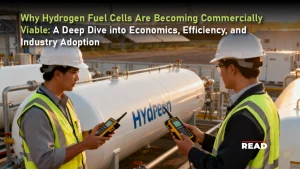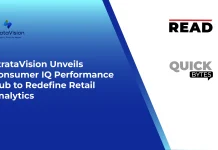Here is Read Magazine’s Weekly Roundup of the top news from global markets. In this fast-paced world, breaking down information helps readers grasp the nuances that follow the news.
In Aerospace news this week…
Planet and Quantum Systems Partner on Satellite-Drone Defense Solution
Planet Labs GmbH, a leading provider of daily Earth insights, and Quantum Systems, a Germany-based pioneer in unmanned aerial technologies, announced a strategic partnership.
In Automotive news this week…
Verra Mobility and Stellantis Partner on AutoKinex™ Automated Tolling
Verra Mobility Corporation, a leading provider of smart mobility technology solutions, announced the launch of AutoKinex™, an OEM-ready in-vehicle commerce platform.
In BFSI news this week…
Tai Software and HaulPay Launch One-Click Carrier Payments
Tai Software has announced the launch of the HaulPay Freight Payment Wallet-powered by HaulPay and embedded directly into Tai TMS-to help freight brokers.
In Biotechnology news this week…
Scientist.com Completes Acquisition by GHO Capital Partners to Accelerate Global R&D Orchestration
Scientist.com, the life sciences industry’s leading AI-enabled R&D orchestration platform, and GHO Capital Partners LLP (“GHO”).
In Defense Technology news this week…
SAIC and HavocAI Partner to Link Autonomous Fleets to U.S. Navy
Science Applications International Corporation (SAIC) and HavocAI announced a strategic collaboration to integrate SAIC’s real-time, multi-domain communications backbone with HavocAI’s fully autonomous maritime fleets.
In Energy, Power & Sustainability news this week…
Schneider Electric and Bloomberg New Economy Launch Energy Technology Coalition
Schneider Electric, a global energy technology leader, and Bloomberg New Economy announced the launch of the Energy Technology Coalition (‘Coalition’).
In Healthcare news this week…
CharmHealth Reimagines Medical Billing With New CharmBillerPro Platform
CharmHealth, a leader in healthcare technology solutions for providers, announced its new CharmBillerPro platform.
In Internet of Things news this week…
ASUS IoT Launches PE3000N Edge-AI Platform
ASUS IoT has launched the PE3000N. This rugged, compact edge-AI platform features the powerful NVIDIA Jetson Thor module.
In Logistics and Supply Chain news this week…
OTR Solutions Acquires TruckSmarter Factoring & Banking
OTR Solutions has announced the acquisition of TruckSmarter’s factoring and banking division, a strategic move that strengthens both companies’ ability to deliver specialized value to carriers across the freight industry.
In Materials news this week…
Rio Tinto and Calix Partner on Low-Emissions Steel Making
Rio Tinto has taken a bold step in its decarbonization journey, signing a Joint Development Agreement (JDA) with Australian cleantech firm Calix to develop a “Zero Emissions Steel Technology” (Zesty™).
In Medical Device news this week…
Coherent Launches Axon FP Femtosecond Laser Technology
Coherent Corp, a leader in photonics, has launched the Axon FP. This new laser is part of the Axon ultrafast family.
In Retail news this week…
Boeing Distribution launches unified ecommerce platform
Boeing announced a key milestone in its ongoing journey to modernize and integrate its distribution businesses with the launch of a new, unified ecommerce.
In Semiconductors and Electronics news this week…
IBM and University of Dayton Partner on Semiconductor Research
IBM and the University of Dayton are partnering up. They’ll work on developing new tech for semiconductors and come up with new materials.
Article of the Week…
Why Hydrogen Fuel Cells Are Becoming Commercially Viable: A Deep Dive into Economics, Efficiency, and Industry Adoption
 Start with the cost monster everyone avoided saying out loud for years which is PGMs. Platinum group metals made fuel cells feel like you were building engines out of jewelry. That’s finally shifting because catalyst engineering has moved from basic chemistry to something closer to material artistry. With PGM alloys and clever nanostructures, labs started pushing the same output with a fraction of the metal. Suddenly the cost equation doesn’t look like a luxury hobby anymore. Even the HFTO Multi Year Program Plan backs this direction with targets like $2 per kilogram hydrogen production by 2026 and sharp cuts in system and storage costs. These targets aren’t motivational posters. They’re blueprints that labs and manufacturers are building around.
Start with the cost monster everyone avoided saying out loud for years which is PGMs. Platinum group metals made fuel cells feel like you were building engines out of jewelry. That’s finally shifting because catalyst engineering has moved from basic chemistry to something closer to material artistry. With PGM alloys and clever nanostructures, labs started pushing the same output with a fraction of the metal. Suddenly the cost equation doesn’t look like a luxury hobby anymore. Even the HFTO Multi Year Program Plan backs this direction with targets like $2 per kilogram hydrogen production by 2026 and sharp cuts in system and storage costs. These targets aren’t motivational posters. They’re blueprints that labs and manufacturers are building around.




